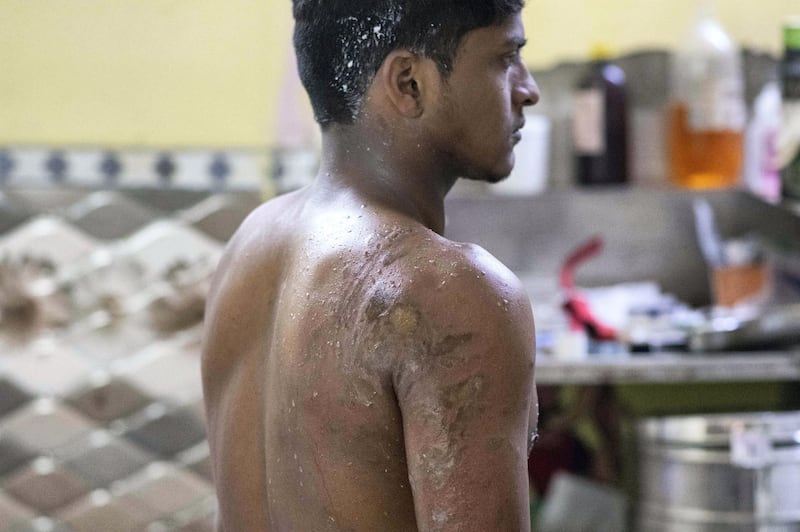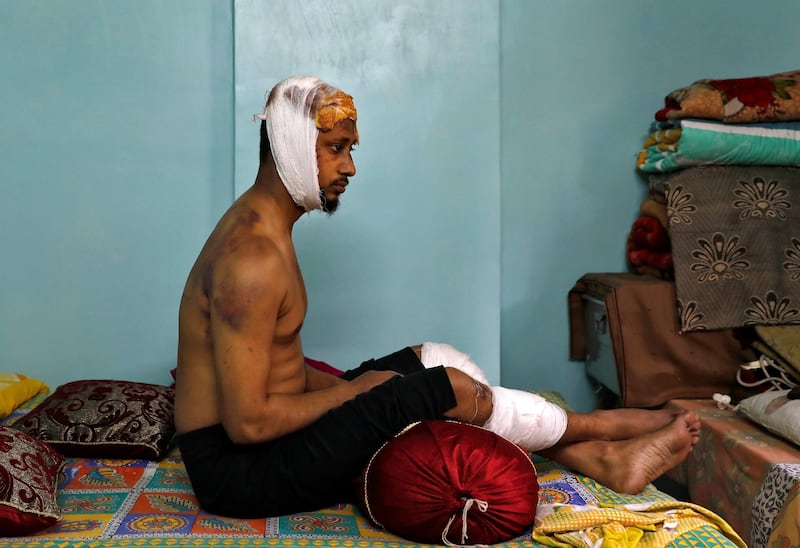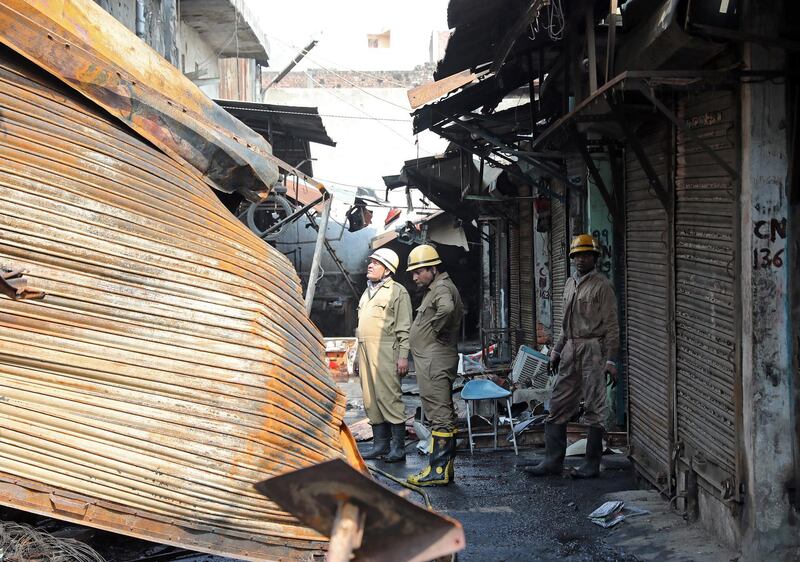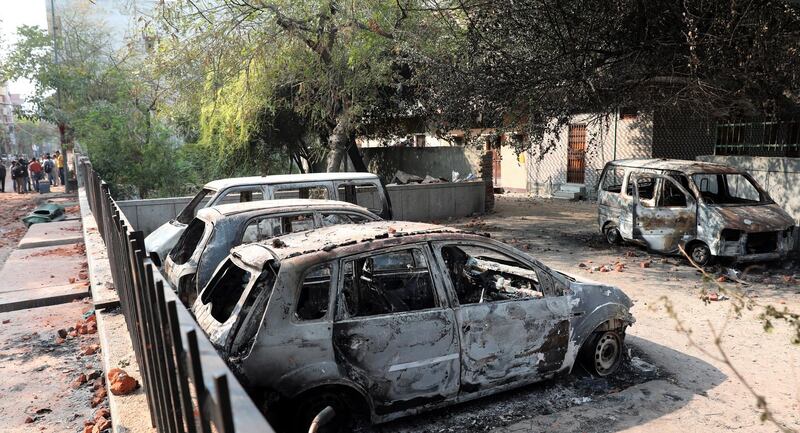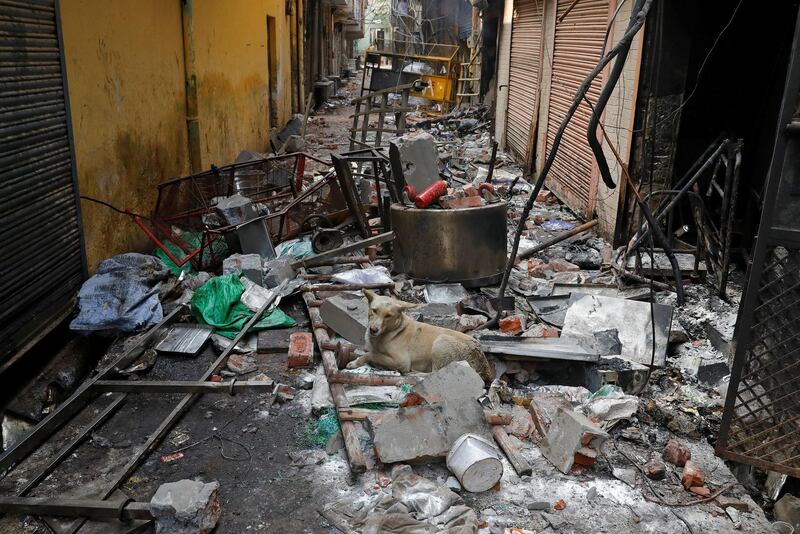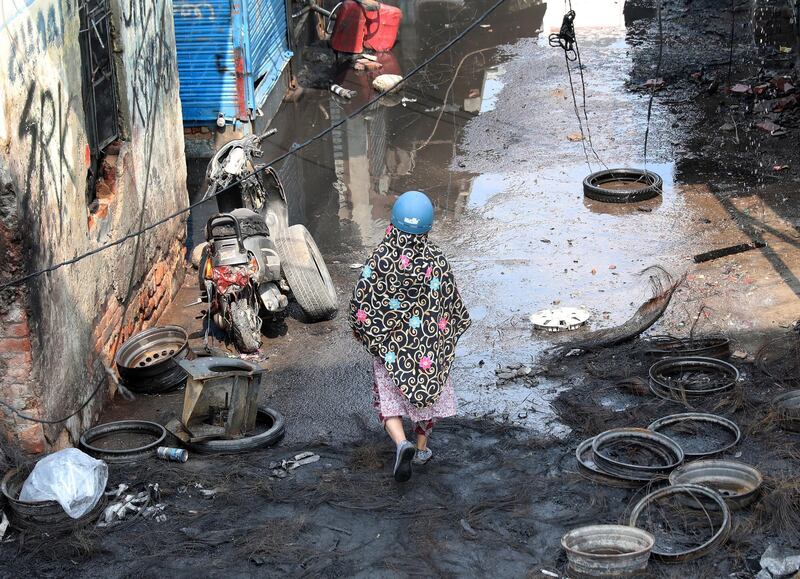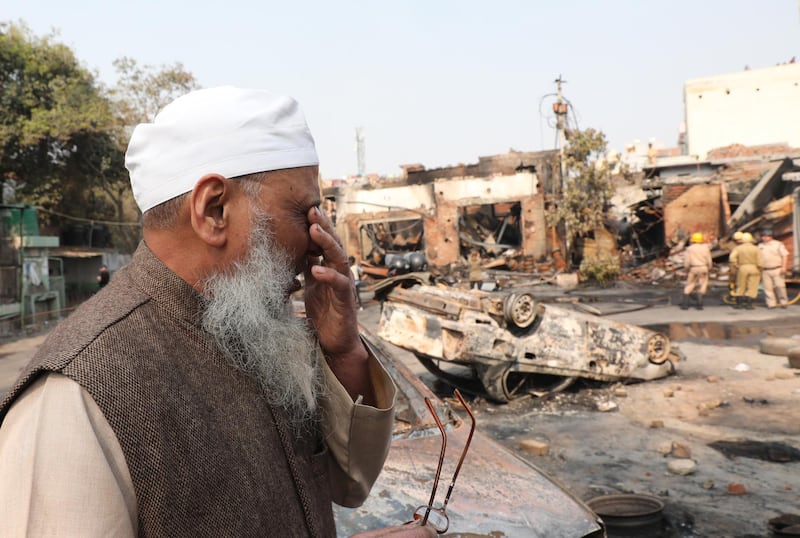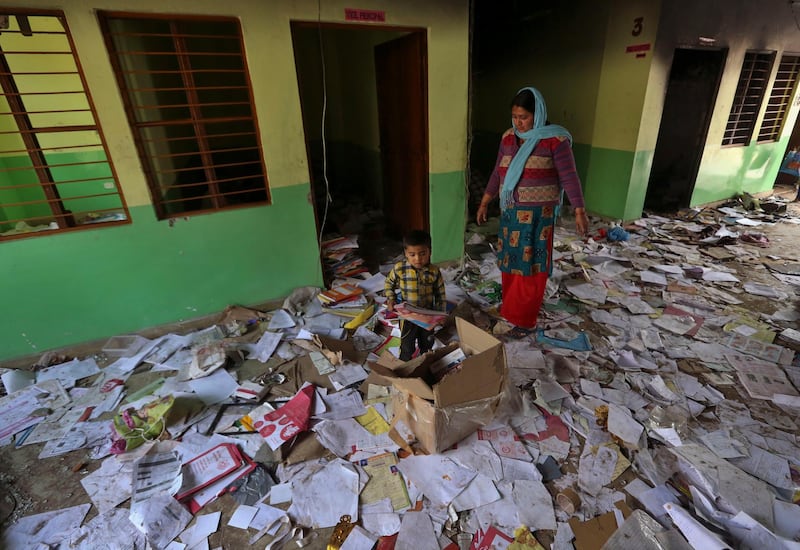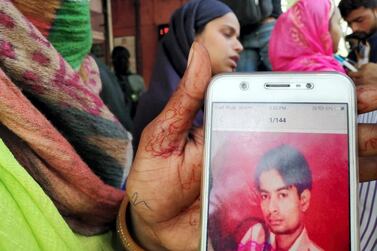When a mob tried to break into the house of Mohammad Waqil, 54, in Delhi's Hindu-dominated Shiv Vihar area, he thought moving his family to the terrace of their three-storey home would keep them safe.
His mostly Hindu district, dotted with Muslim homes, had been caught up in one of the Indian capital's worst sectarian riots in decades, which killed at least 47 people.
Hospital authorities said more than a dozen people, including paramilitary soldiers, have been injured in acid attacks during the riots, which began last Monday.
The violence, which has now calmed, was triggered by a new Indian law that grants citizenship to non-Muslim immigrants.
The mob, which Mr Waqil's daughter Anam said was about 200-strong, battered at the main door and threw stones at the panicked family on the terrace, chanting "Jai Shri Ram" (Hail Lord Ram) – a religious slogan that has become a war cry for right-wing Hindu groups.
"We were scared and threw some stones back at them. Suddenly some liquid hit me and immediately caused a burning sensation," Anam, 20, told The National from Delhi's Lok Nayak Jai Prakash Hospital.
“It burnt so badly that I felt somebody had rubbed chilli powder. I couldn’t stop the sensation and immediately washed it and felt blisters on my neck and hands,” she said.
“Next, I saw my father's face bleeding. It was burnt and he couldn't even cry in fear of the men attacking us further,” she said."
It soon became clear that her father had been hit with acid in a plastic pouch, which also sprayed Anam.
After escaping to their local mosque, where dozens of other Muslims were hiding, Mr Waqil was taken to the hospital, his face black with blisters and eyes burning.
Doctors are yet to assess whether he will be able to see again but confirmed the liquid thrown on him was acid.
Acid has long been used as a weapon by men in India against women. It has also been widely used in property disputes or for revenge in personal animosities.
Around 300 acid attacks are reported in India each year according to the National Crime Records Bureau.
In 2013, the government, feeling the pressure of years of campaigning by victims, restricted the sale of acid and, in 2016, it increased the jail term for using acid as a weapon to life in prison.
But the corrosive substance remains freely available across the country, mostly for domestic purposes like household cleaning and industrial use.
Acid's use on both sides of the sectarian clashes is a concerning development, which experts say is largely due to the demographics of the area affected by the riots – a working class migrant district.
Among the victims is Parvesh Kumar, who was returning home from work late on Tuesday when he was attacked by a Muslim mob in a nearby locality.
"They beat him with sticks and hurled abuse. He was bleeding from the mouth and then someone from the mob poured some liquid on him," Mr Kumar's brother Vijay told The National from Guru Teg Bahadur Hospital in north-east Delhi, close to the riot sites.
“He was face down and the acid fell on his neck and shoulder,” Mr Vijay said.
Unconventional objects like acid, as well as cooking-gas cylinders, petrol bombs and slingshots have been used sparingly in previous riots in the country, where mobs mostly resort to more classic weaponry such as knives, swords or guns, as well as sticks and stones.
The new citizenship law has sparked months of protests by Muslims who say it could be used to marginalise them.
Prime Minister Narendra Modi denied the legislation was discriminatory and appealed for peace following the worst violence to hit the city in almost four decades.
Almost half of the 47 victims died from gunshot wounds and another 55 are undergoing treatment for bullet wounds, hospital officials have said.
Others were killed by lynching, stabbing or being set alight, hospital records show.
Hundreds of vehicles and properties were set on fire in at least eight localities across the densely populated north-east Delhi region, which is home to a large migrant population, some of whom work in car or chemical manufacturing plants, while others are in the scrap industry and other small factories.
Police said they are investigating the use of acid, improvised firearms and gas cylinders in the riots.
Dozens of Molotov cocktails and acid pouches were recovered from a local politician’s house after a social media video showed hundreds of men on the terrace attacking a mob in the street below with petrol bombs and stones, police said.
Experts say this week’s widespread riots are the first in many decades to hit an urban centre, where the dynamics of the violence are different from that seen in rural areas.
Vikram Singh a former Indian state police chief said that it was the first time that catapults were used to launch petrol and acid bombs.
"There are two things that are different — the first is the massive use of slingshots and use of Molotov and acid bombs that was sparingly used 30 years," Mr Singh told The National.
"To make a crude bomb out of that and to make slingshots unless there is a deviant mind, it is not possible."
Back in the hospital, a shocked Anam said she is unsure whether her family will ever recover after the devastating attack.
“We are shocked and we don’t know what is going to happen to us if my father doesn't see again. Our lives have [been] scarred forever. We do not want to go back to the same neighbourhood because we are scared,” Anam said.
